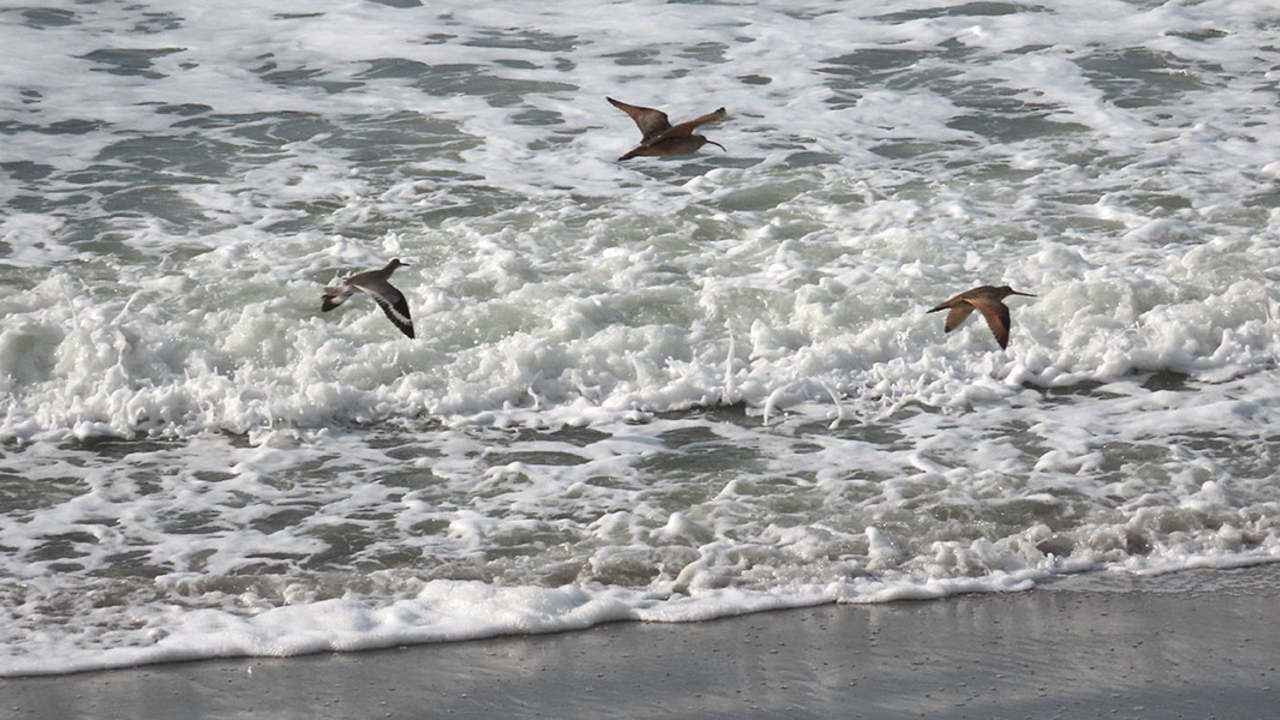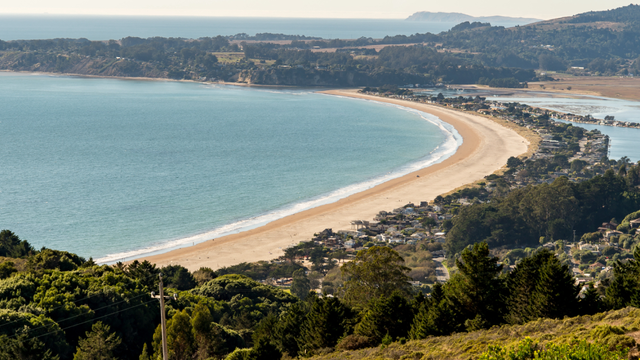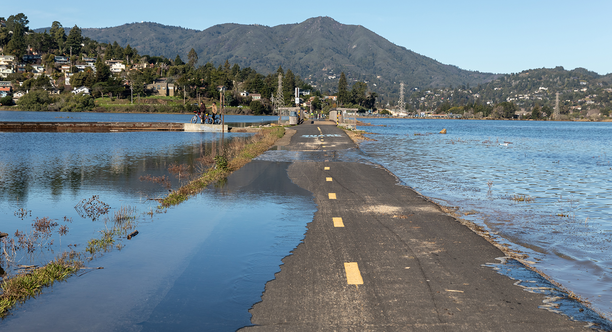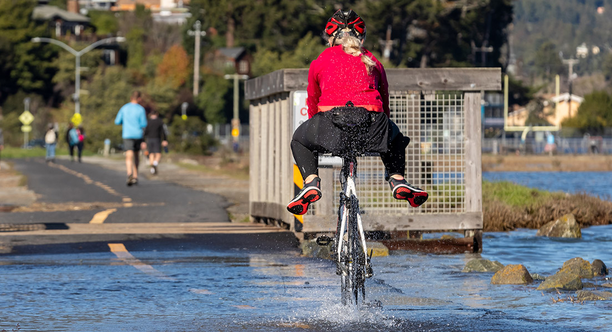Stinson Beach & Bolinas Lagoon Coastal Resilience Projects
Sea Level Rise in the Parks
Rising water levels could reach 2 to 5 feet by the year 2100, with huge impacts to communities and ecosystems if no action is taken.

Linzy Lim / Parks Conservancy
The Golden Gate National Recreation Area (GGNRA) is home to 91 miles of precious shoreline used for recreation, learning, and general enjoyment by people and the many living things which populate our varied coastal ecosystems.
The California coast is truly incredible. Whether this is your first visit or your 100th, you are essential to protecting this unique place and landscape. By practicing Leave No Trace principles, you will help create healthier ecosystems and a more enjoyable outdoor space for all of us to share.
Visit cleanercoast.org to learn more about Leave No Trace and how simple actions can make a big difference.
Rising Tides
"Royal Tides" or "King Tides" are terms used to describe the unusually high tides that occur several times a year due to periodic alignments of the earth, moon, and sun. These tides can help us identify flood risks and visualize what coastal areas and shorelines will look like with higher sea levels. Help document these changes by submitting your photos of the area to the California King Tides Project. When taking photos, please do so safely, respect the power of the ocean and don't disturb shorebirds that may be much further upland than usual.
Learn more: coastal.ca.gov/kingtides


Evolving Shorelines at Bothin Marsh Open Space Preserve

Here's what rising tides tell us about climate resilience


